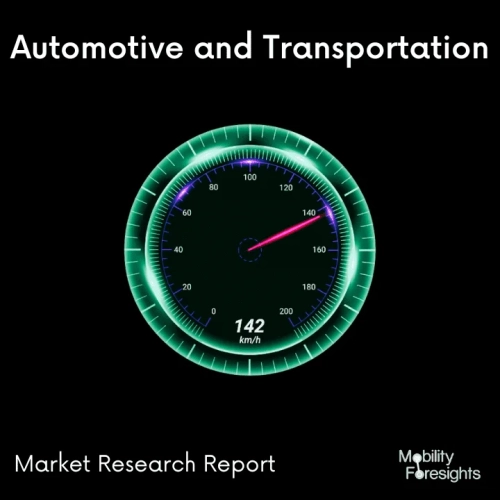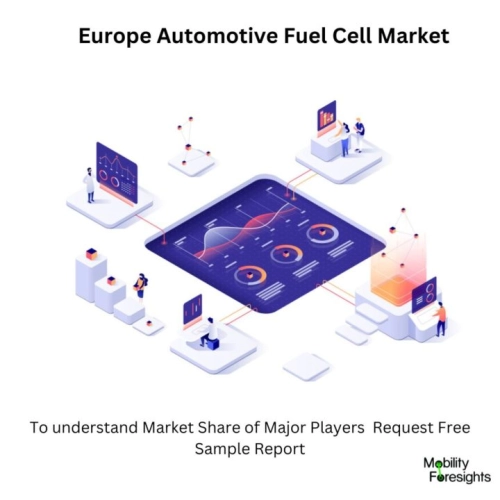
- Get in Touch with Us

Last Updated: Apr 25, 2025 | Study Period:
The European automotive fuel cell market is experiencing rapid growth due to the increased focus on reducing carbon emissions and transitioning to clean energy. As governments in Europe push for greener transportation, hydrogen fuel cells are becoming a viable solution for long-distance travel and heavy-duty transportation. This market is largely driven by government incentives, stricter emissions regulations, and the technological advancements that have made fuel cells more efficient and cost-effective.
Technological innovations, particularly in hydrogen storage, are transforming the market. Companies are working on solid-state hydrogen storage and improving fuel cell efficiency to extend vehicle range. However, despite the progress, the market faces challenges such as the high cost of fuel cell vehicles and the lack of hydrogen refueling stations across many European regions. Nonetheless, with continuous investments in hydrogen infrastructure and production, the market is poised for significant growth.
The European automotive fuel cell market is a key player in the shift towards zero-emission vehicles, leveraging hydrogen fuel cells to power vehicles in an environmentally friendly manner. The market comprises various models of vehicles, from passenger cars to heavy-duty trucks, which use hydrogen as a fuel source.
Fuel cells in this market come in different types, such as Proton Exchange Membrane (PEM) fuel cells, which dominate the market, and Solid Oxide Fuel Cells (SOFCs), used in niche applications. Each type offers distinct advantages depending on the specific application, with PEM fuel cells being favored for vehicles due to their quick start-up and high power density.
Applications of automotive fuel cells extend beyond passenger cars to include buses, trucks, and even material-handling equipment. Fuel cells offer a longer range and quicker refueling time compared to battery electric vehicles, making them an attractive option for long-distance and commercial use.
While the adoption of fuel cells offers many benefits such as zero emissions, high energy efficiency, and fast refueling times, the market faces several challenges. High production costs and the lack of hydrogen infrastructure are critical barriers, though these are being addressed through government and industry initiatives.
As of 2023, the Europe automotive fuel cell market is valued at approximately USD 1.8 billion. The market is projected to grow at a CAGR of 12.5%, reaching around USD 4.2 billion by 2030. Key drivers behind this growth include government subsidies, technological advancements in hydrogen production, and the growing demand for zero-emission vehicles across Europe.

The increasing availability of hydrogen refueling stations is expected to boost the market. Germany currently leads the market with the largest infrastructure for hydrogen refueling, and this trend is likely to extend to other countries.
| SI No. | Topic |
| 1 | Market Segmentation |
| 2 | Scope of the Report |
| 3 | Research Methodology |
| 4 | Executive Summary |
| 5 | Key Predictions for the Europe Automotive Fuel Cell Market |
| 6 | Average B2B Price of Fuel Cell Vehicles |
| 7 | Major Drivers for the Europe Automotive Fuel Cell Market |
| 8 | Fuel Cell Vehicle Production Footprint in Europe – 2023 |
| 9 | Technological Developments in Fuel Cell Technology |
| 10 | New Product Development in the Europe Automotive Fuel Cell Market |
| 11 | Key Focus Areas for New Automotive Fuel Cell Research |
| 12 | Key Trends in the Europe Automotive Fuel Cell Market |
| 13 | Import and Export of Hydrogen Fuel and Impact on Fuel Cell Vehicles |
| 14 | Regulations and Incentives for Fuel Cell Vehicles by Region |
| 15 | Major Projects Utilizing Automotive Fuel Cells in Europe |
| 16 | Market Size, Dynamics, and Forecast by Geography (2024-2030) |
| 17 | Market Size, Dynamics, and Forecast by Vehicle Type (2024-2030) |
| 18 | Market Size, Dynamics, and Forecast by Power Output (2024-2030) |
| 19 | Market Size, Dynamics, and Forecast by Application (2024-2030) |
| 20 | Competitive Landscape |
| 21 | Growth Strategy of Leading Players |
| 22 | Market Share of Vendors in 2023 |
| 23 | Company Profiles |
| 24 | Unmet Needs and Opportunities |
| 25 | Conclusion |